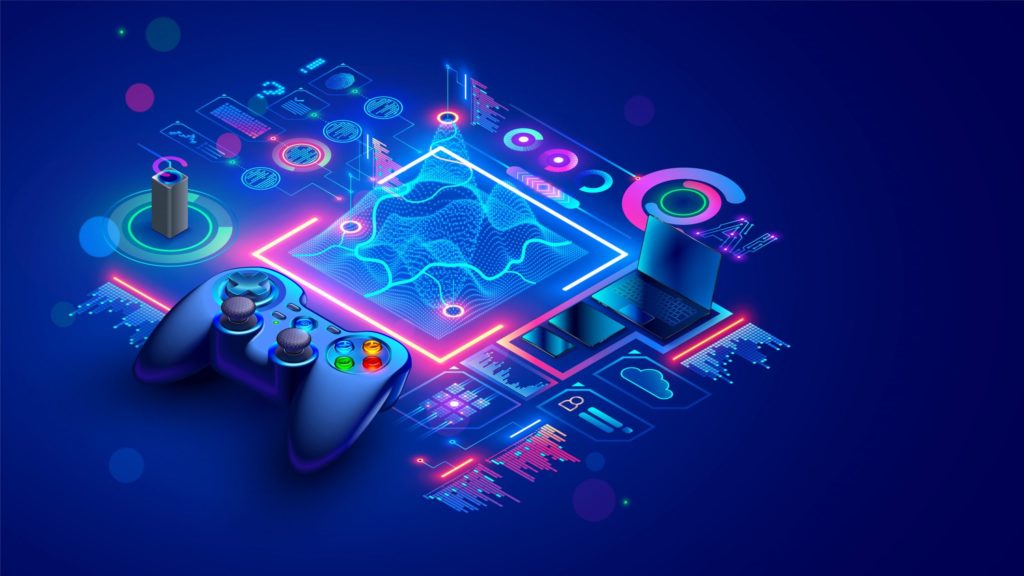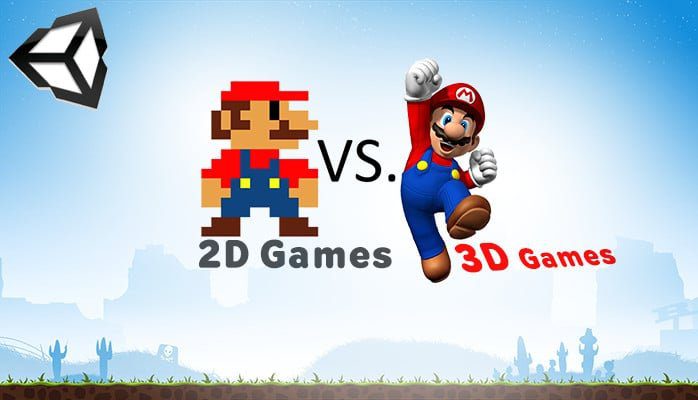Table of Contents
The website is user-supported, and As an affiliate of Amazon, we may earn commission from each qualifying sale.
Now, you might be thinking, which is the best GPU for game development in 2022.
We Previously discussed graphics cards for programming.
The answer to this question might not be straightforward as there is tons of information scattered over the internet.
Our top picks cards for game developments are-
Some tech enthusiasts will recommend you opt for a GTX 1080Ti, while others will reason with you to choose the best of the best, i.e., RTX 3080.
So, to cut through all the nuisance, we improvised the following graphic cards, which are worth recommending in 2022 for those who want to start making 3d games using an engine.
They greatly range in the budget price-point, so make sure to choose the one that is suited for your needs.
1) AMD Radeon RX 5700 XT

AMD’s RTX 5700XT is another mid-tier GPU that is perfect for Game Development or even 1440p gaming.
It might not have top-of-the-line features as we see in the RTX lineup like ray tracing and Tensor cores, but it’s still an excellent card that is bound to deliver performance.
Based on the latest 7nm RDNA architecture, it shares cutting-edge components like 8GB GDDR6 video memory that is backed by a 1,605MHz clock frequency.
Another great thing about cards in this lineup is power efficiency. Those developers who are concerned about complications resulting from high power draw should definitely opt for the AMD Radeon RX 5700 XT.
If you strive toward working on Unreal Engine 4, then this card is an excellent investment.
| PROS | CONS |
| Decent base and boost clock speeds | Comparable with Nvidia’s 2070 |
| It shares 8GB of video memory in GDDR6 format | Lacks DLLS support |
| Equipped with Directx 11 support |
2) NVIDIA RTX 3080

The first product that is definitely worth mentioning on this list is none other than the RTX 3080 from Nvidia.
This card stands out from the competition, whether it’s 4K gaming, top-of-the-line video or photo-editing or ultra-realistic 3D game development.
It boasts a robust architecture that will be relevant in the days to come.
If you are working for an advanced game development firm and want solid horsepower in compiling your level design or managing diverse simulations, then you definitely want to get your hands on the RTX 3080.
It comes equipped with ray-tracing capabilities as well, so if you want to test your skills in some of the cutting-edge titles, you can rightfully do so.
The performance levels of NVIDIA RTX 3080 are far suited for professionals, so keep in mind you have to spend huge bucks.
| PROS | CONS |
| Fast-paced performance out of the bunch | Not easy to find on MSRP |
| It comes with Directx 12 capabilities | It can be a bit pricey |
| Quite sufficient onboard VRAM |
3) NVIDIA GTX 1660

This might not come as a surprise for you, but Nvidia’s 1660 card is still an excellent bang for the buck card for any type of creative work in 2022.
It shares decent performance that can get you up and running within no time while still remaining in the affordable spectrum.
For beginner game developers who want to improve their skills and gain experience in the long run, getting the GTX 1660 from Nvidia is a must.
Some might say that it’s overkill for 2D development, but when it comes to working on refined texture.
Additionally, most of the GTX 1660 from third-party vendors are available in a small form factor, so it will easily fit even if you have a mini-ITX casing.
| PROS | CONS |
| Best suited for beginner to intermediate work | Certain models have noise-related issues |
| Budget oriented graphic card for game development | Not the best model for developing VR games |
| Easy assembly due to small form factor |
Are Graphic Cards Important in Game Development?

Right off the bat, let me clear the general notion. Game Development could definitely be archived on lower-end hardware, precisely without the aid of a high-tier graphics card.
Any previous-gen laptops with just a core i3 CPU paired with integrated intel’s GPU and 8GB of system memory will get the job done for the majority of the game developers as long as they are working on small assemblies.
If you are experimenting with lower resources, as seen in 2D games, you definitely don’t need a powerful machine running the latest and greatest hardware.
In fact, according to Unity 3D’s official website, games could be run on even a DX10 compatible Graphics API, which at least most of the consumers already have in their system. So, you will be good to go;
however, don’t expect much any further than that. The performance will readily degrade on your renders, and the whole experience won’t be optimal.
Things to Consider When Choosing Graphics card for Software Development/Game Development

Like any other system accessory, choosing a graphics card has never been easy. Even with the above recommendations, users can often get lost in determining which model is right for them in the long run.
That’s why we have combined the following aspects which every game or software developer needs to consider when buying a GPU. These are under as;
VRAM
First and foremost, you need to definitely consider how much VRAM your graphic card should avail that can get you the desired results. Like the system’s memory, VRAM helps overcome the total load on the graphic card by dividing the performance across multiple chunks.
So, the greater the VRAM, the easier it is for the GPU to handle graphical loads. For most game developers, 6-8GB VRAM will be more than enough to handle most of the 3D game engine. However, if you plan on testing your titles, you can definitely opt for more.
Clock Speed
Unlike VRAM, the clock speed of a graphic card denotes the raw horsepower of the integrated architecture. Simply put, Clock speed signifies how much load the GPU can handle in the given time.
Usually, this value is measured in either GHz or MHz for the convenience of the user. The higher the clock speed you get, the more resilient the card will be. Although, keep in mind that clock speed itself isn’t enough to determine the performance of the GPU.
Things like cooling performance do act as a defining factor in addition to the overall clock speeds.
Processing Unit/Architecture
Processing units or a number of cores is also crucial because every software developer should look at a GPU. Like CPU, the graphic card’s cores denote the overall computational strength of the card.
Generally speaking, higher-end cards have greater processing cores than lower-end ones, meaning they perform far better in the actual task. The same could be said for architecture.
GPUs are available in a wide range of models, each of which incorporates their architecture. One of the latest architectures is Ampere by Nvidia, while for AMD, it’s Navi.
Bottomline
So, this was our thoughts on the topic of whether a graphics card is necessary for game development or not. In conclusion, GPU’s integrity ultimately depends on whether you want to make 2D games or hone your skills in the 3D genre.
For those who want to work on the game engines like Unreal, it’s best to equip their rig with the latest and greatest hardware, including graphic cards.
Regardless of which category of game you develop, when you first start out, the entry barrier is fairly low, and you can get away with an average PC.
You certainly don’t need anything in the high-end spectrum, and even a basic gaming PC will get the job done. With that said, take a bit of time in analyzing your requirements and then choose your card or other hardware components accordingly!
Game Development Categories – 2D Vs 3D Games

Before we head on to the importance of a GPU in game development, it’s worth discussing the game development categories. Most of the renowned games in the market are either 2D-based or tailored in a 3D context. Let’s discuss each of them.
2-D Game Development
As the name suggests, this development category relies on pixel coordinates, meaning the games themselves are flat (2-dimensional). Both movements of the characters and environments are designed so that the general design seems unpretentious.
This type of styling is much suited for beginner game developers who want to hone their skills without putting any constraints on their setup.
Conversely, 2D games firstly appeared in the mainstream and were quite popular back in the day. Players love their easy to reach goals that are free from many major complexities, as we see in 3D development.
With that said, 2D games are quite straightforward to make for the development community, so they genuinely require low system horsepower.
Any three to four core CPUs that are running in a 64-bit setup will be more than enough to compile 2D games. In addition to that, the requirement for further hardware components is retained within the lower-end as well.
3-D Game Development
Generally speaking, 3Dgames are unrestricted in their character design, movement, and environment and have more depth, which sometimes corresponds to the real world.
Players around the globe immerse themselves in their well-defined visuals on a daily basis. Due to this reason, a lot of time and money is invested into the development of such games. Other than that, the game engines utilized for 3D development are more refined than their 2D counterparts.
The two titans in the 3-dimensional engine arena are either Unreal Engine or Unity 3D. Both do a fairly decent job in maintaining the game’s environment and providing flexibility for high-end game developers.
So, unless you’re making Retro games, 3D development is the way to go in today’s world. They tend to be a bit harder to develop right off the bat, but if you want to make serious cash, then you definitely need to adopt a 3d development format.
Now to run 3D game development engines, you will probably require a modest hardware setup. A Ryzen 5 coupled with 16GB and higher memory is definitely worth investing in as they will lead toward a better experience as you render the 3D models. The same could be said in terms of the graphics department.
FAQs
Is a 4GB Graphic card best suited for game development?
According to various sources (forms) on the internet, a GPU with 4-6GB VRAM is decent for basic level development and 3D rendering but don’t expect anything exceptional from that.
How much ram is sufficient for game development?
The majority of the game and software engines like Unreal Engine 4 and Maya suggest 8GB of system memory, but you can definitely opt for more if you have the budget.
